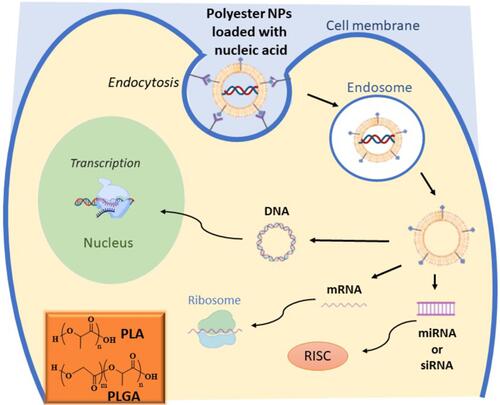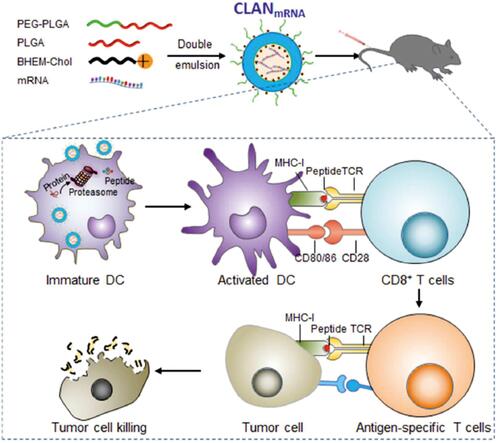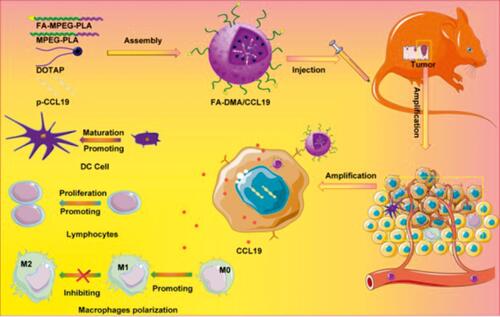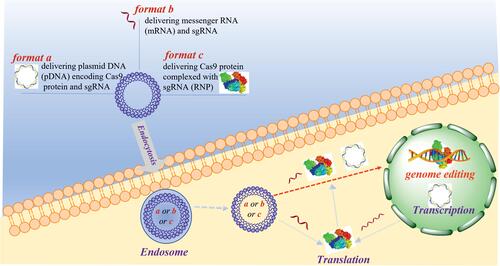Figures & data
Figure 1 Delivery of different nucleic acids (DNA, mRNA, miRNA or siRNA) by non-viral vectors based on polyester NPs. The image represents the cell interaction and uptake, via endocytosis, of polyester-based NPs delivering NA. After endocytosis and endosomal escape, NA are released by the NPs and they follow different specific pathways. siRNA and miRNA act by binding the RNA-induced silencing complex (RISC), mRNA bind the translational machinery (ribosome) to be translated, and DNA must be transported to the nucleus to exert its activity. In the inset, the chemical structures of PLGA and PLA are reported.

Figure 2 Schematic illustration of the structure and chemical components of multifunctional PBAE-PLGA-Ag2S-RA-siSOX9 (PPAR-siSOX9) nanoformulation.

Figure 3 Schematic illustration of CLAN encapsulating mRNA coding for the model immunology protein OVA that stimulates the maturation of DCs, promotes the activation and proliferation of antigen-specific T cells and induces a robust anti-tumor immune response in an aggressive E.G7-OVA lymphoma murine model.

Figure 4 Schematic illustration of the effects of the folate targeted gene-delivery system consisting of methoxy poly(ethylene glycol)-poly(lactide) (MPEG-PLA) and DOTAP loaded with CCL19 (FA-DMA/CCL19). The gene delivered into tumor cells expresses and secrets CCL19 protein factor, which induced activation of the immune system to kill cancer.

Figure 5 Schematic representation of different configurations of Cas9/sgRNA elements used in the intracellular delivery: format a delivers plasmid DNA encoding Cas9 proteins and sgRNA; format b delivers mRNA and sgRNA; format c delivers Cas9 protein complexed with sgRNA (ribonucleoprotein RNP).

Figure 6 (A) Schematic representation of Cationic Lipid Assisted Nanoparticles (CLAN) preparation by double emulsion solvent evaporation method. (B) CLAN vector and its components (PEG5K-PLGA11K, cationic BHEM-Chol lipid, and plasmid); (C) Representative TEM image of CLANpM458.

Table 1 Overview of COVID-19 Vaccines Licensed or Under Development
